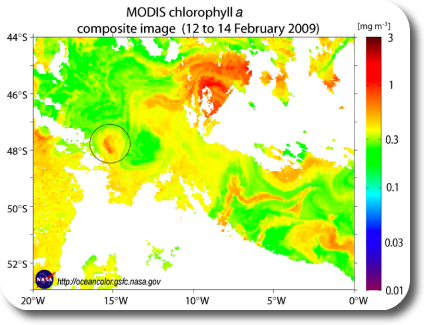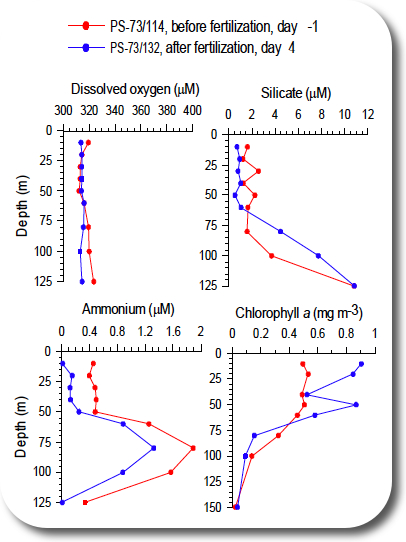Archive for the ‘Engineering’ tag
Jacob Bear Short Course – Day 4
The course is over. Instead of blogging immediately about day 4, I spent the evening in Torino and hung out with some people from the course. At this point I have to point out how nice the city of Torino is, how nice and willing to help the people are. In the town, during the days of my visit, I was asked at least three independent times, if I needed help! On the final evening, we sat down on a bench on one of the plazas, and an elderly man started to talk to us in Italian, slowly and very well understandably. He ended up walking with us through the old city four over an hour and pointed out places of interest. It was just wonderful!
On the last day we covered heat transport and transport with fluids of variable density, especially sea water intrusion. From a historical point of view it’s interesting that because of sea water intrusion, density dependent models were the first “contamination” models to be developed. That is before dispersion was developed, and hence sea water intrusion was treated with sharp interfaces. We learned about the “Hele Shaw Model“, which Jacob Bear has used to model sea water intrusion before the use of computers was feasible. Bear developed during his M.Sc. thesis a horizontal Hele Shaw model. His first bookhas a full section on constructing Hele Shaw models. The idea seems from a former time, but such a model could have its uses for education!
In the afternoon, Dr. Rajandrea Sethi gave a presentation on how his group models colloid- and nano-particle transport under saturated conditions.
These were just amazing four days in Torino. It was such an interesting approach – to hear essentially a short but complete version of porous media theory in four days. Jacob Bear as teacher for this short course was amazing. Every word he uses has a meaning, everything he says builds up consecutively, and he stresses the important points. I will have many ideas to write about in the next little while for sure! 🙂
Local Water News – Extreme Events!
The Stuttgarter Zeitung recently published two articles related to water:
The first article describes the flood-protection measures for a part of the city of Tübingen. The city council just agreed to start building a dam in 2010. This dam will be able to stand in a flood with a 20-year return period.
A normally relatively small creek, the “Goldersbach“, has lead in the past after extreme precipitation events to extensive flooding and related destruction. The dam is part of a multiple-level protection strategy, which is outlined in this publication. The dam is a good thing, however it won’t withstand any substantial floods, that is floods bigger than with a 20-year return period. This is why the warning time is critical for the citizens living in the area! The article states that the warning time is five hours. It would be interesting to get to know details on how they estimate five hours as the warning time. Measurements have to be made, submitted, and calculations and predictions have to be made, involving fair amounts of uncertainty.
The second article describes how NASA researchers found out while working with GRACE data that groundwater levels are declining in India since 2002, even though the precipitation patterns have been fairly normal.
These are two practical examples that illustrate how extreme events are critical and need special attention!
Geoengineering
Recently, I ran into the word geoengineering quite frequently. I kind of thought of it as a form of geotechnical engineering, but it seemed like the things that were talked about had not very much to do with geotechnical engineering.
This blog post will try and shed some light into what geoengineering implies. As [wikipedia][1] points out right at the start of its article on “geoengineering“, this term is not to be confused with “geotechnical engineering”! To keep confusion at a minimum level, let’s start with some definitions:
Definitions
To clarify things, here are a few related important definitions from wikipedia:
Geoengineering: manipulate the Earth’s climate to counteract the effects of global warming from greenhouse gas emissions.
Planetary engineering is the application of technology for the purpose of influencing the global properties of a planet. The goal of this theoretical task is usually to make other worlds habitable for life. Geoengineering ti the application of planetary engineering techniques to Earth.
Terraforming is a type of planetary engineering by which a planet’s surface conditions are altered to be more like those of Earth
Geotechnical Engineering is the branch of civil engineering concerned with the engineering behavior of earth materials
Geoengineering
One of the blog posts I came across recently which talk about geoengineering was a post by Miriam Goldstein at The Oyster’s Garter. She discusses the risks and benefits of geoengineering, especially a type of geoengineering called “iron fertilization”. This proposal involves “deliberately stimulating plant growth in the ocean with the aim that the excess material will be permanently sequestered in the deep sea. This would remove carbon from the atmosphere”. For German speaking readers, here is a nice summary. Other types of geoengineering she discusses include stratospheric aerosols, cloud whitening, atmospheric carbon capture, and geochemical carbon capture.
Probably, Miriam is talking about the same iron fertilization project as the german news-magazin “Der Spiegel” in its article from January 14th, 2009. “Der Spiegel” reported then that the project has been halted due to “environmental concerns” – the same concerns which have been raised by Miriram. On January 27th, the german federal research ministry allowed the Polarstern to conduct the experiment (see also this report). The AWI already posted first measurement results. I am not a remote sensing expert, but I kind of believe this map showing that more algae live in the area where the iron was put into the ocean. However, the total range of chlorophyll concentration on the map is from 0.1mg/m3 to 3mg/m3. That’s one order of magnitude. Map taken from here

Map showing chlorophyll a concentration in the ocean at the are where iron was applied (circled) and in the vicinity of that area.
Another set of measurements made available by the Alfred Wegener Institute are depth profiles of dissolved oxygen, silicate, ammonium and chlorophyll taken at two different moments in time: before the iron was put in place and four days after. Again, I am not a biologist or oceanologist, but the changes do not seem extremely high. But then, it’s only after four days.

Concentration profiles of relevant aqueous concentrations before (red) and after (blue) the iron was brought out.
To conclude, I guess it’s too early to conclude if the experiment was successful or not. However, it seems a very risky and monetary intensive experiment.
Here are two more posts dealing with geoengineering:
James Hrynyshyn at “Living on an Island of Doubt in a climate of change” posts some similar doubtful concerns about the effectivity of geoengineering. He writes:
As Lenton and Vaughan write, geoengineering really only makes sense as a part of a larger strategy that includes cutting back hard on greenhouse gas emissions.
Wired reports on a “Carbon Burial” project, also referred to as “geological sequestration”, that will deposit a million metric tons of carbon dioxide into the ground by 2012. This is such a hot topic, it probably deserves an individual post.
After all these novel approaches, an interesting side-node from some classic geotechnical engineering, with an interesting outcome – Wired reports:
Drillers accidentally hit a pocket of molten rock underneath a working geothermal energy field in Hawaii, a lucky break for geologists that could allow them to map the geological plumbing that created everything we know as land.
update Wednesday; April 15, 2009: Wired has an article from a researcher on board a boat in the southern ocean.
A Shift in the Debate Over Global Warming
Emissions caps are not enough, say advocates of radically new technologies.
China, India and other developing nations march headlong into the modern world of cars and electric consumption on their way to becoming the dominant producer of greenhouse gases for decades to come.
read more | digg story
Grand Challenges for Engineering
The US National Academy of Engineering has announced a list of the 14 Engineering’s Grand Challenges. The committee that chose these topics after a one year long decision process include Larry Page, co-founder of google, as well as Craig Venter who was instrumental in mapping the human genome.
According to them, the 14 engineering challenges are:
- Make solar energy affordable.
- Provide energy from fusion.
- Develop carbon sequestration methods.
- Manage the nitrogen cycle.
- Provide access to clean water.
- Restore and improve urban infrastructure.
- Advance health informatics.
- Engineer better medicines.
- Reverse-engineer the brain.
- Prevent nuclear terror.
- Secure cyberspace.
- Enhance virtual reality.
- Advance personalized learning.
- Engineer the tools for scientific discovery.
Currently, providing access to clean water is voted to be the third most important item on this list. Let’s get to it!
Nobel Price, Climate Engineering
Nobel Prices
Germany is in a hype because two german researchers won this year’s Nobel Prices in Physics and Chemistry: Peter Grünberg from the Forschungszentrum Jülich together with Albert Fert (France) for their work on magnet resistance, and Gerhard Ertl (Fritz Haber Institute Berlin) for his research on processes on solid surfaces, respectively. In previous years, the lack of german researchers winning a Nobel Price was taken as the main argument to claim that german research sucks. The two guys winning two of this year’s prices are taken as clear evidence, that german research is not so bad after all. Only the universities are a little bit behind because both Nobel Price winners currently are employed at federal research centers. Nobody tells us when or where they did the actual work that made them win the prices now.
Climate Engineering
There are people out there who are certain that the climate is changing, and they are trying to do something against that. One idea is to dump a whole bunch of iron into the oceans which then reduces global greenhouse-gas pollution. Patrick surely knows more about that. Wired calls the act of thinking and planning such activities global climate engineering. Interesting point:
Calls for regulation might sound wimpy in the face of climate-change risks. There’s broad scientific agreement on the dangers of a warming planet: drought, famine, social and economic unrest — catastrophes that could be just decades away. Or, if we hit so-called tipping points, such as unexpectedly fast-melting polar-ice caps, or a thawing Siberian permafrost, they might be a few years away.
Other news
- National Geographic lists the ten most polluted places
- Water forms bridges